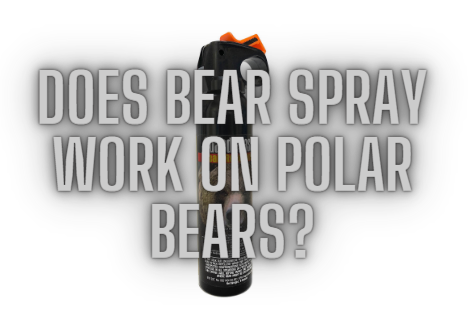Encounters between humans and wildlife, such as polar bears (Ursus maritimus), can pose risks in certain regions. To mitigate potential conflicts, bear spray has gained popularity as a non-lethal deterrent. However, when it comes to polar bears, specific considerations come into play. In this article, we will explore the effectiveness of bear spray as a defense against polar bears, considering their behavior, physiology, and the available evidence.
Understanding Bear Spray
Bear spray is a concentrated pepper spray formulation designed to deter aggressive bears. It typically contains capsaicin, a chemical compound derived from hot peppers, which causes temporary discomfort, irritation, and inflammation when it comes into contact with an animal’s eyes, nose, and respiratory system. The spray is dispensed in a high-pressure aerosol canister, providing a range of several meters.
Polar Bear Behavior and Encounters
Polar bears are powerful predators and have a reputation for being curious and potentially dangerous. Encounters between humans and polar bears primarily occur in the Arctic region, where human activities overlap with the bears’ habitat. These encounters can happen in remote areas, on sea ice, or in coastal communities.
Factors Influencing Bear Spray Effectiveness
Several factors influence the effectiveness of bear spray against polar bears:
Proximity and Speed: The efficacy of bear spray decreases with shorter distances and faster bear approaches. In close quarters, there might be limited time to react and deploy the spray effectively.
Wind and Environmental Conditions: Wind direction and strength are critical factors. Strong winds can disperse the spray, reducing its effectiveness. Calm weather conditions are preferable for optimal deployment.
Spray Concentration and Duration: Bear spray formulations specifically designed for polar bears should have higher capsaicin concentrations to account for their physiological and behavioral differences compared to other bear species.
Proper Deployment: Proper technique in deploying bear spray involves aiming for the bear’s face and creating a cloud of spray to maximize coverage. Training and familiarity with bear spray usage are essential for effective deployment.
The Limited Evidence: Challenges and Experiences
The effectiveness of bear spray against polar bears is challenging to assess due to limited scientific research and the rarity of polar bear encounters. Observational reports and anecdotal evidence suggest that bear spray can deter polar bears, causing them to retreat or change their behavior. However, the variability in real-life scenarios and the uniqueness of each encounter make it difficult to establish a definitive conclusion.
Comprehensive Safety Measures
While bear spray may be an option for personal defense against polar bears, it should be considered as part of a comprehensive safety strategy. Maintaining a safe distance from polar bears, traveling in groups, carrying deterrents, and being vigilant in polar bear habitat are crucial components of mitigating risks.
Final Thoughts
Bear spray can be a valuable tool in mitigating risks associated with polar bear encounters. While its effectiveness against polar bears is not fully understood due to limited scientific evidence, it has shown potential as a deterrent in anecdotal reports. However, it is essential to recognize that bear spray is not a guaranteed solution and should be used in conjunction with other safety measures. Understanding polar bear behavior, practicing proper deployment techniques, and maintaining situational awareness are key to minimizing conflicts and ensuring the safety of both humans and polar bears.

